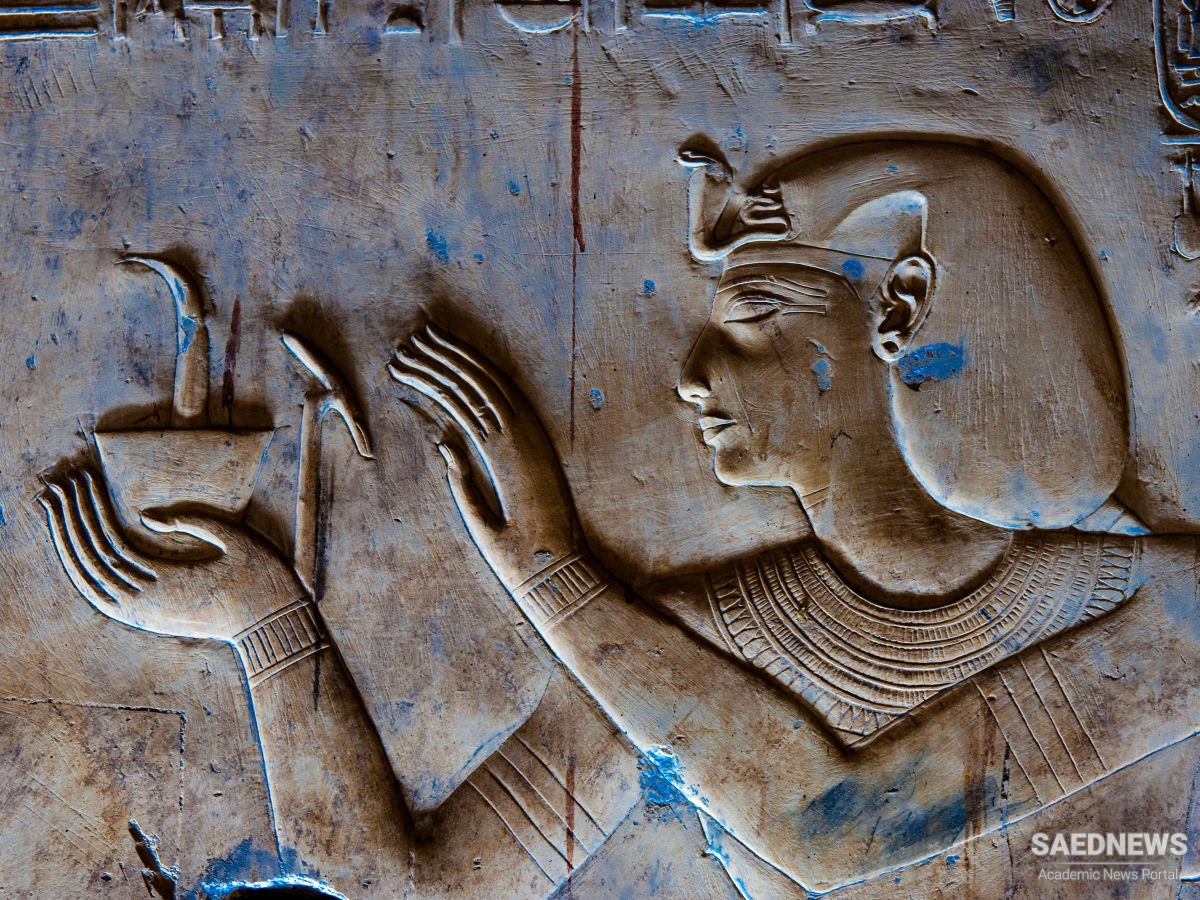This did not mean, though, that in life human beings need do no more than placate Osiris, for the Egyptian pantheon was huge. About 2000 gods existed and there were several important cults. Many of them originated in the prehistoric animal deities; Horus, the falcon god, was also god of the dynasty and probably arrived with the mysterious invaders of the fourth millennium BC . These animals underwent a slow but incomplete humanization; artists stuck their animal heads on to human bodies.
Such totem-like creatures were rearranged in fresh patterns as the Pharaohs sought through the consolidation of their cults to achieve political ends. In this way the cult of Horus was consolidated with that of Amon-Re, the sun god, of whom the Pharaoh came to be regarded as the incarnation.
Later, Horus was seen as the son of Osiris and his consort Isis. This goddess of creation and love was probably the most ancient of all – her origins, like those of other Egyptian deities, go back to the pre-dynastic era, and she is one development of the ubiquitous mother-goddess of whom evidence survives from all over the Neolithic Middle East. She was long to endure, her image, the infant Horus in her arms, surviving into the Christian iconography of the Virgin Mary.
The gods loom large in the subject-matter of ancient Egyptian art, but it contains much more besides. It was based on a fundamental naturalism of representation which, however restrained by conventions of expression and gesture, gives two millennia of classical Egyptian art at first a beautiful simplicity and later, in a more decadent period, an endearing charm and approachability. It permitted a realistic portrayal of scenes of everyday life.
The rural themes of farming, fishing and hunting are displayed in them; craftsmen are shown at work on their products and scribes at their duties. Yet neither content nor technique is in the end the most striking characteristic of Egyptian art, but its recognizably continuous style. For some 2000 years, artists were able to work satisfyingly within a classical tradition.
Its origins may owe something to Sumer and it showed itself later able to borrow other foreign influences, yet the strength and solidity of the central and native tradition never wavers. It must have been one of the most impressive visual features of Egypt to a visitor in ancient times; what he saw looked so much of a piece. If we exempt what was done in the Upper Palaeolithic, of which we know so very little, it is the longest and strongest continuous tradition in the whole history of art.
It did not prove to be transplantable. Perhaps the Greeks took the column from ancient Egypt, where it had its origins in the mud-plastered bundle of reeds of which a reminiscence survives in fl uting. What is clear apart from this is that although the monuments of Egypt continuously fascinated artists and architects of other lands, the result, even when they exploited them successfully for their own purposes, was always superfi cial and exotic.
Egyptian style never took root anywhere else; it pops up from time to time down the ages as decoration and embellishment – fluted columns, sphinxes and serpents on furniture, an obelisk here, a cinema there. Only one great integral contribution was made by Egyptian art to the future, the establishment – for the delineation of the huge incised and painted fi gures on the walls of tombs and temples – of the classical canons of proportion of the human body. These were to pass through the Greeks, and European artists would still be fascinated by them as late as Leonardo, although by then the contribution was theoretical, not stylistic.


 Reconstruction of National Economy
Reconstruction of National Economy














































